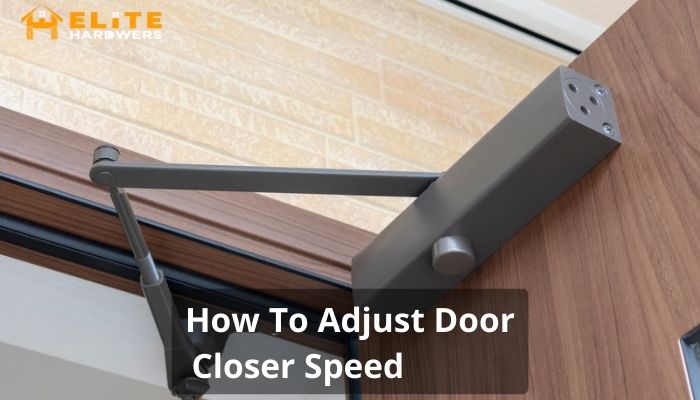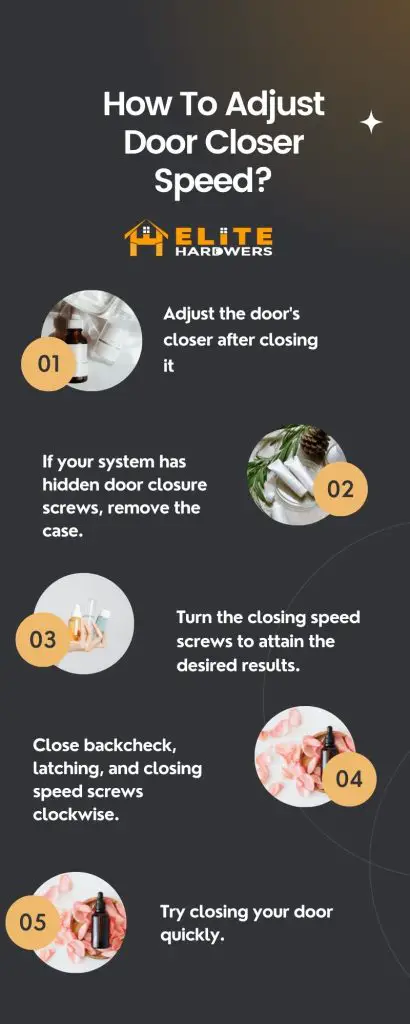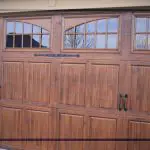How To Adjust Door Closer Speed?
Door closers are very helpful as they control how the door closes and latches. But, the same doors can cause injuries. If the system cannot effectively control how fast the door moves, it becomes a menace to the users.
According to the ADA standards, door closers should close within 5 seconds when opened at a 90 degrees angle.

A door closer taking a shorter or longer time than that will not serve effectively. Thankfully, all door closer systems are adjustable within a few steps and a handful of tools. This piece highlights the required tools and the adjustment procedure to follow.
Anyone with the procedure can adjust the door closer speed without a plumber’s intervention as elaborated below.
Tools Required For Door Closer Speed Adjustment
Ideally, adjustment tools vary depending on the door closer type and design. But again, the process is pretty straightforward and doesn’t require much.

It’s advisable that you use compatible, premium quality tools to avoid damaging the door closer adjustment screws. If you don’t have the tools that came with the door closer system, we highly recommend that you acquire the following tools for an expedited process;
- Hex key allen wrench set
- Screwdriver
You will also need work gloves and a good step ladder for convenient access. If your Allen wrench isn’t compatible with your screws, you may need a specific hex key.
For Phillips screws, we recommend using a Phillips screwdriver for compatibility. Either of the tools should serve you well regardless of whether it’s a pneumatic door closer not working or any other type.
How To Adjust Door Closer Speed?
How do I slow down my door closer speed? We believe this is the question you anticipate getting answers to. Now, an ordinary door closer has a tube-like or rectangular framework containing a hydraulic fluid.
You may experience door closer problems like spluttering when the screws are loose. Thankfully, typical door closers come with various screws. There should be one for regulating the swing speed, the other one for latch speed, and another for determining how far the door opens.
Before we delve into the procedure, maybe you’re still wondering- How do I change the speed of my screen door closer? For this reason, we felt it’s important that we highlight the following;
Turning the screws clockwise = reduces speed
Turning the screws anti-clockwise = increases speed
Most importantly, make little turns at a time as you test the door movement until you achieve your desired results.
Even if you’re here to learn how to fix andersen storm door closer, the above tips apply.
Pro-Tip
Some systems usually come with their screws labeled. You may see the labels ‘L’ ‘B’ and ‘S’ somewhere on the system, probably near the door closer hinge. The L symbol represents latch, and it controls the door’s closing speed for the last few inches, while ‘B’ symbolizes backcheck.
The backcheck valve adjust door closer to stop slamming. The label ‘S,’ on the other hand, stands for sweep, and it regulates the closing speed within the sweep radius. You adjust it accordingly based on the problem you’re experiencing.
If your system doesn’t have these details, check out a door closer adjustment diagram for a detailed illustration. To adjust the door closer speed, follow these simple steps;
- Close the door whose closer you intend to adjust
- If your system has a concealed door closer adjustment, gently remove the attached casing to access the screws
- Identify the screws corresponding to the closing speed and turn it accordingly depending on the results you want to achieve
- Turn the backcheck, latching, and closing speed screws clockwise to close them
- Open your door and test how fast it closes

At this point, you will have a door closer not closing all the way, because you already tightened the closing, latching, and backcheck valves. The next thing should be to adjust them slowly until you get the right results. Turn them either clockwise or anti-clockwise depending on what you want.
For instance, having a hydraulic door closer hard to open means you need to adjust the spring tension. Regulate the pressure until the door loosens up such that it’s relatively easy to open. If the door remains adamant after that, it may mean that installation was done wrong.
Both screen and storm door closers enable the door to open and close when someone passes through. If you have a pneumatic door closer not working, the procedure is the same as above.
Final Words
Adjusting the door closing speed is a simple procedure that you can complete within minutes. A staff member can also correct the issue whenever it arises. But, you’ve to be careful how you tighten the screws to avoid damaging the system. Also, note that you can only tighten the screws where there are no other signs of damage.
If you notice oil leaks near the door, it may be time to replace the closer. Continued leaks can make the floors overly slick, leading to accidents. Also, in case all the oil drains, the door would swing freely and no level of screws adjustment would correct the issue.




